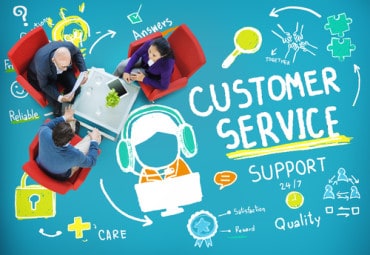
As companies become more reliant on software to drive revenue, reliability will be the backbone needed to become a digital-first business.
What do Airbnb, Netflix, Tesla, and Amazon all have in common? They all have digital business models with innovation capabilities that offer highly engaging, revenue-generating services that are consumed differently than traditional goods and services. Today’s customers want improved services, better products, increased engagement, and fast resolution to any problems. Increasingly, reliability is a critical component and differentiator as businesses transform to digital-first operations.
To be best-in-class in digital, it’s critical that products, services, and online experience be reliable, according to Bruno Kurtic, Vice President of Strategy and Solutions at Sumo Logic. “If they aren’t, your customers will, with a click of a button, go elsewhere. They don’t have to drive or wait — they can satisfy their needs by going somewhere else right then and there and may never come back.”
As such, reliability is now a digital transformation imperative and can impact the customer experience in multiple ways, including:
- Availability: Can customers access products or services when they need them?
- Performance: Is the performance of a business’s products or services in line with customer expectations?
- Security: Do customers trust that the business can securely handle their data or money?
As Kurtic notes, “Even short-lasting issues can have a significant effect because they can impact thousands of customers at once. Thus, reliability management is a real-time activity, and the name-of-the-game is fast identification and resolution of issues. Achieving reliability requires resilient architecture, real-time data, scalable analytics, and an incident response process.”
See Also: Continuous Intelligence Insights
Reliability through observability
How does a business address the reliability issue? That’s where observability comes into play. Gartner defines observability as the evolution of monitoring into a process that offers insight into digital business applications to speed innovation and enhance customer experience.
Observability has become more important for developers and enterprise IT teams. More companies have adopted cloud infrastructure and microservices to create their applications in order to deliver updates faster and be flexible around digital services. However, these shifts on the architecture and design sides have an impact on how to keep up with what is going on within those applications.
Featured Resource: The Origins of Observability [Watch Now]
Observability lets businesses answer questions about availability, performance, security, and more through the collection and analysis of data across systems, applications, and infrastructure, which allows a business to gain insights into the actions of those environments.
What’s needed for observability to improve and ensure reliability?
For years, network, application performance, and security monitoring were fairly passive operations. Systems collected key telemetry data, and operators received alerts when a particular metric crossed a preset threshold.
The problem is that almost everything today, be it a product or service, is embedded with software agents or IoT devices that constantly emit status data. Specifically, data is generated by infrastructure (servers, VMs, containers, cloud, etc.), applications, security technologies (endpoint, SSO, etc.), and it comes in the form of logs, metrics, and traces. The analysis of this data and the derivation of insights to improve reliability needs to be done at the speed of the data. Simply put, companies need insights in real-time so they can take action as events are occurring. And more to the point, they need modern AI-based observability solutions to sort through this data to accelerate incident resolution, improve service assurance, simplify cloud management, and help manage digital transformation.
Taking a data-driven approach to reliability
Observability is the first step on the road to reliability. “Observability is an adaptive approach for multiple digital business challenges such as monitoring, diagnostics, and troubleshooting of mission-critical applications running in the cloud or hybrid environments, refactoring applications from monolithic to microservices-based using technologies like Kubernetes or serverless, moving to the cloud, detecting, and responding to security issues and performing real-time business analytics to name a few,” noted Kurtic.
While modern application stacks have become increasingly complex and interconnected, the data deluge generated from each customer interaction – through infrastructure, applications, clients, and security solutions – is making it increasingly difficult for businesses to get real-time insights and extract value from it. Taking a data-driven approach to observability can help businesses scale to get the insights to take quick actions to improve and ensure reliability.
As companies become more reliant on software to drive revenue, reliability will be the backbone needed to become a digital-first business. The ability to extract real-time insights and business value from massive volumes of machine data across logs, metrics, events, metadata, traces, and other telemetry will contribute to business success and provide a competitive advantage to address a variety of intelligence needs across multiple use cases.
Featured Resource: Continuous Intelligence and the Era of Real-Time, Data-Driven Business [Download Now]






